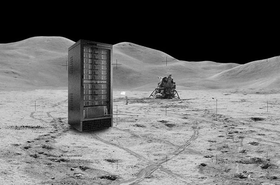The China National Space Administration (CNSA) plans to deploy a constellation of satellites around the Moon.
The system will be used to provide communication and navigation services to lunar probes and, eventually, a research station.
CNSA plans to launch the Chang'e-6, Chang'e-7 and Chang'e-8 lunar probes in phases, each of which will require some level of connectivity and navigation.
With 6 exploring the far side of the Moon, it will not be able to maintain direct communication with the Earth, requiring a relay system.
Chang'e-4 achieved humanity's first soft landing on the far side of the Moon in 2019, followed by the Chang'e-5. Both used the Queqiao Relay Satellite to connect back to Earth.
But the successor system, as well as 7 and 8 exploring the southern pole, more connectivity will be required. All three are planned to be launched before 2030, ahead of the launch of a lunar scientific research station.
Specific details about the satellite constellation were not disclosed.
The European Space Agency also hopes to deploy an initial three to four satellites around the Moon, providing Internet and GPS-like services to the lunar service, potentially with the help of base stations. Project Moonlight hopes that not only will it improve access to the far side of the Moon, but it will allow rovers and other landers to carry less communications equipment.
That is also the goal of LunaNet, NASA's ambitious plan to build an Internet for the Moon - and then the wider Solar System.




